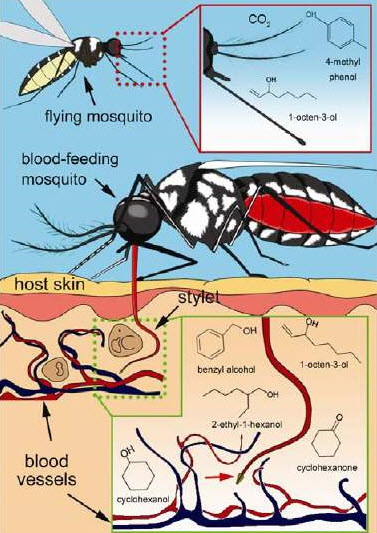
A novel olfactory organ in the mosquito stylet
Seoul National University Professor AHN Young-joon (College of Agriculture and Life Sciences), and Professor KWON Hyung-wook (College of Agriculture and Life Sciences) have made a scientific breakthrough in mosquito research. The news is expected to be vital in the fight against mosquitoes. The innovative research was published on the 26th of August in Scientific Reports, a subsidiary journal of the acclaimed scientific journal, Nature.
Previous scientists had documented that mosquitoes are attracted to humans due to their emissions of octenol (found in human breath, and sweat) and carbon dioxide as well as odors emitted by sweat (lactic acid) and feet (isovaleric acid). However, the mystery was the mosquito’s unerring ability to swiftly locate the veins of its victim and suck blood before the victim even realized its presence. Professor AHN and Professor KWON sought to understand the mechanism that allowed mosquitoes to be so efficient.
Through the research it was discovered that sensory hairs were located at the tip of a mosquito’s piercing-sucking stylet, an essential apparatus for blood feeding. These hairs housed olfactory receptor neurons that expressed two conventional olfactory receptors, AaOr8 and AaOr49. The professors demonstrated that these receptors were activated by volatile compounds present in blood, proving that the receptors were critical in allowing mosquitoes to locate the veins. By inhibiting the gene expression of these AaOrs through RNA interference, the scientists crippled the mosquitoes’ efficiency and delayed their blood feeding, causing them to take up to fifteen minutes, whereas normally, mosquitoes would feed within thirty seconds. The newly discovered olfactory systems proved to be central to a mosquito’s blood feeding.
The mosquito is the most lethal animal in the world. Last year, it killed almost a million people, according to the WHO (World Health Organization), while humans, in second place, had only half the number of kills. Mosquitoes are typically a minor inconvenience to many of those in developed countries, but through the spread of fatal diseases such as malaria, yellow fever, and dengue, they are a terrifying presence in many developing regions such as Africa, South America, and Asia. The publications of Professor AHN and Professor KWON have provided the world with a more thorough understanding of this deadly animal. Using this knowledge, it is hoped that a genetic disruption of these newly discovered receptors could decrease mosquito bites, prevent its breeding, and thus lead to an improvement in worldwide health.
- This research was published in Scientific Reports journal of Nature on the 26th of August
- Professor AHN Young-joon’s lab: http://bnpl.snu.ac.kr/
- SNU College of Agriculture and Life Sciences: http://calseng.snu.ac.kr/
Written by JUN Taehoon, SNU English Editor, taehoonjun@snu.ac.kr
Reviewed by Eli Park Sorensen, SNU Professor of Liberal Studies, eps7257@snu.ac.kr

